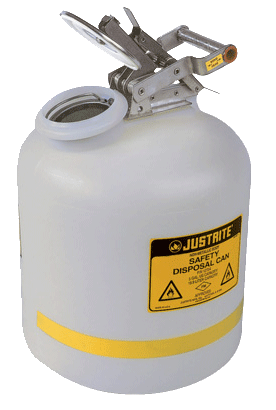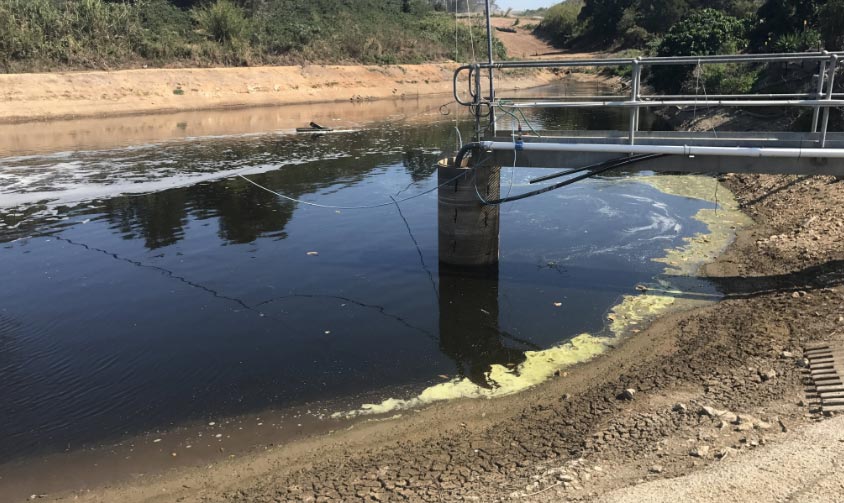Just How Liquid Garbage Disposal Works: A Comprehensive Overview of Techniques and Technologies Utilized
Summary of Fluid Waste Kind
The complexity of liquid waste types necessitates a detailed understanding of their characteristics and effects for disposal. Liquid waste can broadly be classified right into several kinds, including industrial, municipal, farming, and unsafe waste. Each group exhibits distinct residential properties, calling for certain administration techniques to minimize ecological and health and wellness threats.
Industrial fluid waste originates from producing procedures and typically includes a range of impurities, such as hefty steels, solvents, and organic compounds. Metropolitan fluid waste, mainly comprising wastewater from families and industrial facilities, contains raw material, nutrients, and virus (industrial wastewater treatment). Agricultural liquid waste, including drainage from ranches, might include plant foods, pesticides, and animal waste, posturing threats to water high quality and communities
Unsafe liquid waste is defined by its poisoning, reactivity, or prospective to trigger injury. Understanding these diverse fluid waste kinds is important for creating effective disposal methods and making sure conformity with environmental policies.
Physical Therapy Approaches

Testing is the first action, where larger fragments and debris are removed from the liquid waste making use of screens or grates. This process secures downstream equipment from damages and guarantees smoother procedure. Following screening, sedimentation makes use of gravitational force to different solids from liquids. In sedimentation tanks, heavier fragments settle near the bottom, forming a sludge layer, while the cleared up liquid can be more dealt with.
Purification is one more necessary technique that includes passing the fluid via permeable products, such as sand or membrane layers, to capture smaller bits. This action boosts the top quality of the fluid, making it suitable for succeeding treatment procedures.

Chemical Therapy Strategies
Chemical treatment strategies are important for properly handling liquid waste, particularly in attending to liquified and colloidal pollutants that physical methods might not adequately get rid of. These methods make use of numerous chemical representatives to reduce the effects of, precipitate, or transform hazardous materials right into much less dangerous kinds.
One usual technique is coagulation and flocculation, where chemicals such as alum or ferric chloride are included in advertise the aggregation of put on hold bits. This procedure boosts sedimentation, enabling easier removal of the resulting sludge. Furthermore, oxidation procedures, employing representatives like chlorine or ozone, are employed to break down complicated organic compounds and microorganisms, providing the waste much safer for discharge or more treatment.
Neutralization is another critical method, which adjusts the pH of acidic or alkaline waste streams to neutral levels, avoiding prospective injury to downstream systems and the atmosphere. Additionally, progressed oxidation procedures (AOPs) make use of combinations of oxidants and ultraviolet light to break down relentless toxins, attaining a greater degree of therapy performance.
Organic Treatment Procedures
Biological treatment procedures play a crucial function in the administration of fluid waste by using microbes to disintegrate raw material and minimize impurity degrees. These processes can be broadly categorized into cardio and anaerobic therapies, each employing particular microbial areas to achieve effective waste deterioration.
Aerobic therapy entails making use of oxygen to facilitate the breakdown of organic materials by microorganisms. This procedure is commonly implemented in triggered sludge systems, where oygenation containers supply a conducive environment for microbial development, leading to the oxidation of organic pollutants. The resultant biomass can check out here be divided from dealt with effluent with sedimentation.
On the other hand, anaerobic therapy happens in the absence of oxygen, relying upon various microorganisms to break down raw material. This technique is especially useful for high-strength waste, as it produces biogas, an eco-friendly power resource, while minimizing sludge production. Technologies such as anaerobic digesters are often used in community and commercial applications.
Both aerobic and anaerobic organic therapies why not look here not just decrease the environmental impact of liquid waste but additionally facilitate resource recuperation, making them necessary parts of sustainable waste administration methods. Their effectiveness, performance, and versatility support their extensive execution across different industries.
Arising Technologies in Disposal
Innovative strategies to fluid garbage disposal are rapidly advancing, driven by advancements in innovation and a boosting focus on sustainability. Amongst these emerging modern technologies, membrane bioreactors (MBRs) have gotten grip for their capability to combine organic treatment with membrane layer filtering, leading to top notch effluent that can be recycled in various applications. MBRs make it possible for smaller footprints and more reliable procedures compared to traditional systems.
An additional appealing advancement is the use of anaerobic food digestion integrated with nutrient healing modern technologies, which not only deals with fluid waste but likewise generates biogas and recoups valuable nutrients like nitrogen and phosphorus. This dual benefit improves source performance and reduces ecological impact.
In addition, progressed oxidation procedures (AOPs) are being taken on for the destruction of complex organic pollutants. These techniques use effective oxidants and stimulants to damage down pollutants at the molecular degree, providing a highly effective service for difficult waste streams.
Additionally, the assimilation of expert system and machine knowing in waste management systems is enhancing operational performance and anticipating maintenance, resulting in lowered expenses and enhanced environmental conformity. These innovations reflect a significant shift towards more efficient and lasting liquid garbage disposal practices.
Final Thought
To conclude, effective liquid garbage disposal requires a thorough understanding of link numerous techniques and modern technologies. The assimilation of physical, chemical, and organic treatment approaches ensures the effective administration of varied waste kinds. Additionally, the emergence of cutting-edge technologies improves treatment efficacy and promotes sustainability in waste management techniques. By constantly progressing these techniques, it ends up being feasible to address the growing challenges linked with fluid waste, inevitably contributing to environmental management and resource healing.
Liquid waste disposal is a crucial aspect of ecological monitoring, requiring an extensive understanding of numerous techniques and technologies tailored to various waste types. Fluid waste can generally be classified right into numerous kinds, consisting of commercial, municipal, agricultural, and unsafe waste. Agricultural fluid waste, consisting of overflow from ranches, may include plant foods, chemicals, and animal waste, posturing threats to water quality and ecosystems.
Different physical treatment techniques play a crucial duty in handling liquid waste effectively - industrial wastewater treatment.In final thought, reliable fluid waste disposal requires an extensive understanding of various techniques and modern technologies